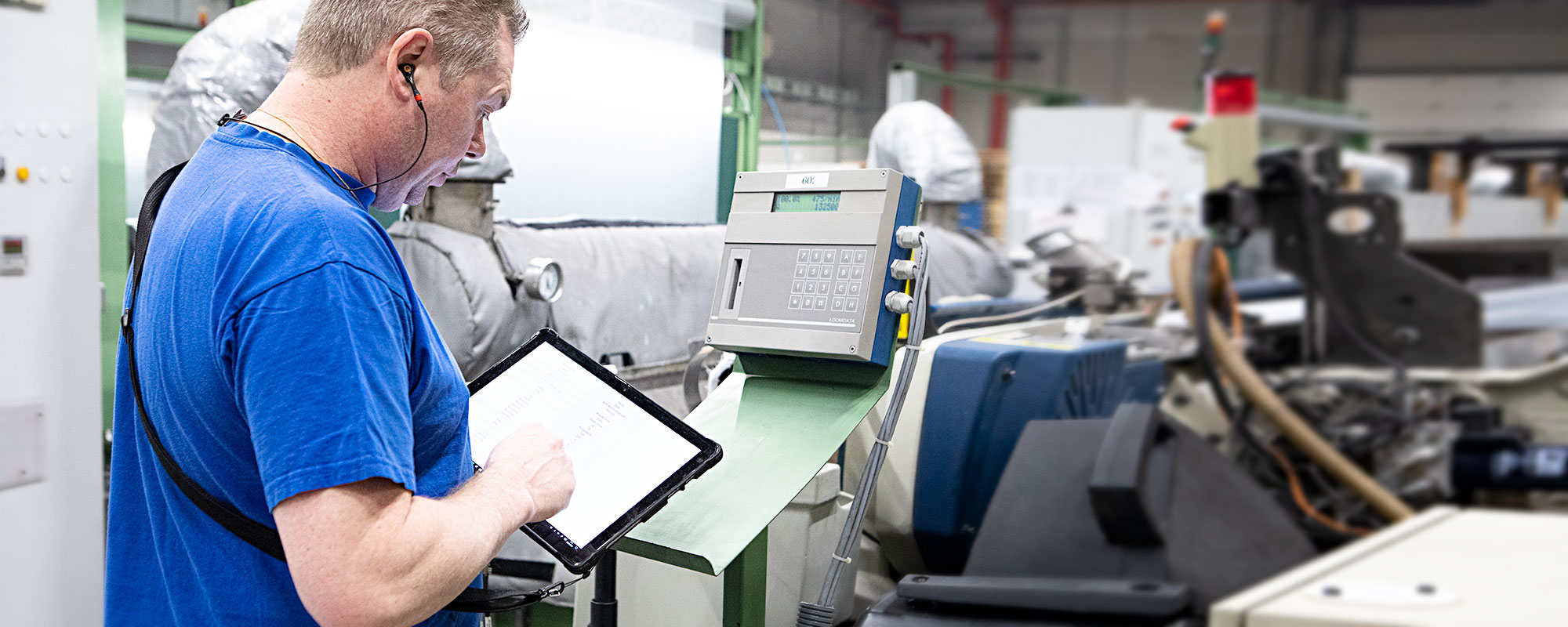Veranneman used to print and use 53 135 documents a year for monitoring its weaving production site. We sought a more ecological alternative, which helped set up our digital project. The data are no longer written on paper forms but are added to the system by using a digital platform that is accessible using tablets.
The former paper trail
Our production system used to be very paper-based. At each of our weaving looms, we used to have four files: one with the product specifications, one with the order specifications, one for monitoring the weaving process and finally, a form that is used for the follow-up of quality measurements. Some of those papers were then transported to other departments or archived.
Taking into account that we have more than 67 weaving looms, it goes without saying that a lot of paper was used. Those four documents were used for each and every one of those looms and for each roll of fabric that was produced. In total, 53 135 documents a year were printed and used, just for monitoring the weaving looms. That’s close to 5000 kilos of paper.
Apart from the ecological disadvantages, the written forms were sometimes hard to read and there wasn’t any feedback on whether a certain value is filled in correctly.
Veranneman’s digital and ecological paperless solution
It was one of our weavers who suggested digitalising the monitoring forms, as he considered it more ecological and easier. By implementing this idea, we haven’t only been able to reduce our paper use, but the data are now directly entered in the right system and all production stages are linked. In addition, the system provides an additional quality guarantee, as the system e.g., indicates when the completed weight values can’t be correct.
The digital platform is very user-friendly. In fact, we can say that it is easier to work with than the written forms we used to have.
Only a small amount of paper left
At our weavers’ request, we still have a paper form for monitoring the weaving process at each of our looms. You might wonder why we would do that now that we have our digital platform. Well, we can’t expect our weavers to walk around with their tablets every second of the day. If they want to check something quickly, they should be able to do so without crossing the entire production site to pick up their tablets.
Second, there should be a back-up in case the network fails to work or whenever a tablet runs out of power or is damaged.
Finally, we are pleased to say that we have become a more eco-friendly and fully digital enterprise.

